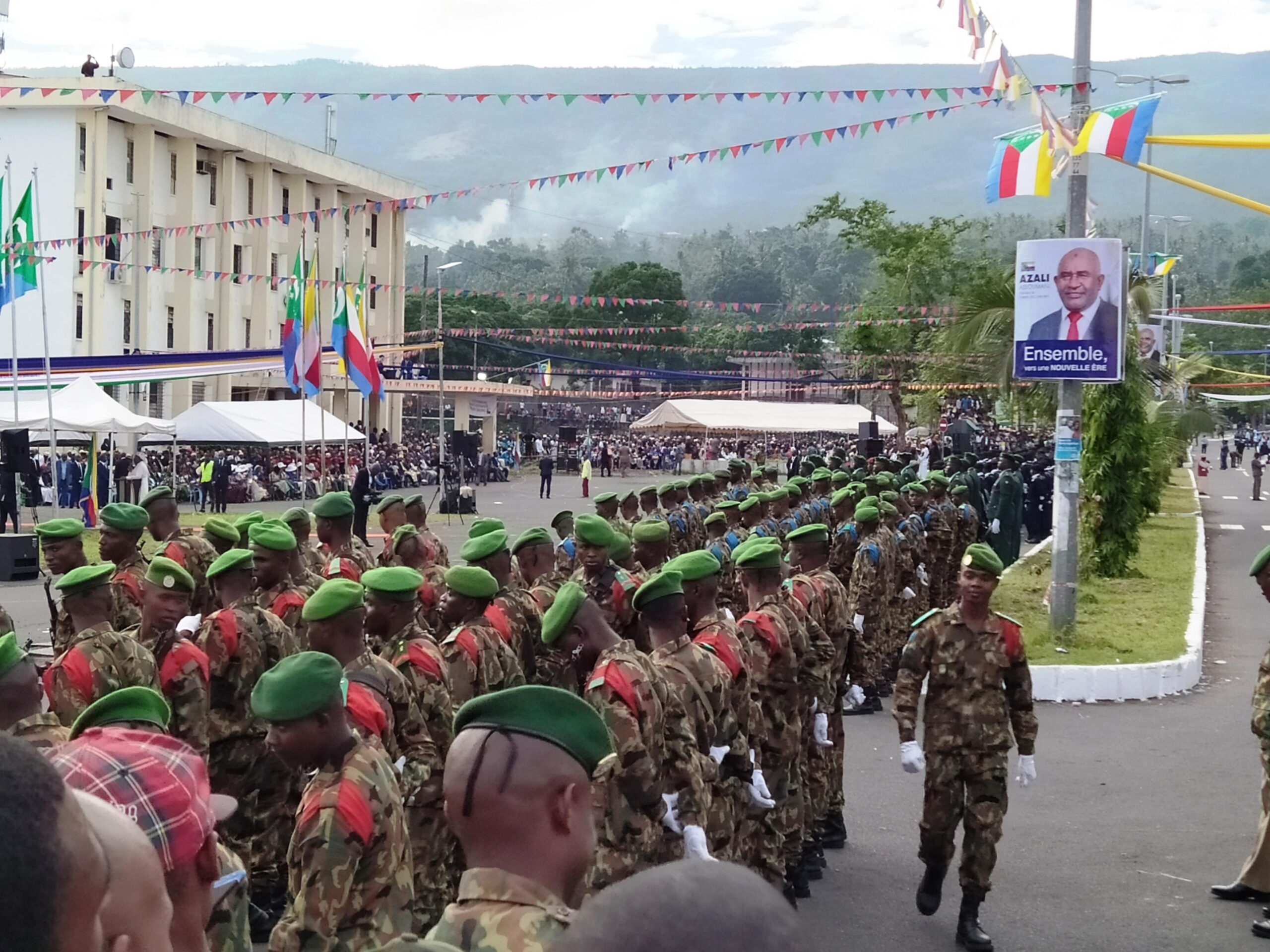A Quick Overview of Comoros
Comoros: Archipelagic country in Southeastern Africa
Location: Northern end of the Mozambique Channel in the Indian Ocean
Capital and Largest City: Moroni
Official Religion: Sunni Islam
Independence Day: 6 July 1975
Area: 1,659 km² (641 sq mi), third-smallest in Africa
Population: Estimated 850,886 in 2019
Official Languages: Shikomori, French, and Arabic
Introduction to Comoros
Nestled in the heart of the Indian Ocean, the Comoros archipelago is a captivating blend of stunning landscapes, rich history, and vibrant cultures.
Comprising four main islands—Grande Comore, Anjouan, Mohéli, and Mayotte—this nation is often referred to as the “perfumed islands” due to its lush vegetation and fragrant spices.
Although Mayotte is governed by France, the other three islands gained independence in 1975, marking the beginning of a unique journey filled with challenges and triumphs.
Also Read: Cape Verde Facts, History, Culture & Travel – Africa Facts Zone
Geographical Overview
Location and Landscape
The Comoros islands are strategically located between Madagascar and the southeastern coast of Africa, approximately 180 miles off the African mainland.
- Grande Comore (N’gazidja): The largest island, known for its volcanic landscapes and the active Mount Karthala.
- Anjouan (Ndzuwani): Famous for its mountainous terrain and agricultural richness.
- Mohéli (Mwali): The smallest island, celebrated for its pristine beaches and marine biodiversity.
- Mayotte (Mahore): Although claimed by Comoros, it remains a French territory, adding a layer of complexity to the region’s political landscape.
Climate
Comoros enjoys a tropical climate characterized by two distinct seasons:
- Dry Season (May to October): Cooler temperatures averaging around 84°F (29°C).
- Wet Season (November to April): Higher temperatures, reaching up to 91°F (33°C), accompanied by heavy rainfall, particularly in January.
This climate supports a rich biodiversity, making the islands a haven for various plant and animal species.
Cultural Mosaic of Comoros
The culture of Comoros is a vibrant tapestry woven from African, Arab, Malagasy, and French influences. This unique blend is reflected in the islands’ languages, traditions, and daily life.
Languages and Ethnic Diversity
- Official Languages: Comorian (Shikomor), Arabic, and French.
- Ethnic Composition: The population is a mix of Arabs, Persians, Africans, and Indians, with a predominantly Muslim majority (around 98%).
Culinary Delights
Comorian cuisine is a delightful fusion of flavours featuring:
- Spices: Cloves, vanilla, and ylang-ylang are staples, contributing to the island’s reputation as a spice hub.
- Traditional Dishes: Seafood, coconut, and rice are commonly used, often seasoned with local spices, to create aromatic dishes.
Historical Context
Early Settlements and Trade
The history of Comoros dates back to the 8th century when Arab and Persian traders first settled on the islands. This period marked the introduction of Islam, which became the dominant religion and significantly influenced the islands’ culture and governance.
Also Read: Ancient Civilizations of Africa and the African Empire
Colonial Era and Independence
- Colonization: The islands fell under French control in the late 19th century, becoming an overseas territory in 1947.
- Independence: In 1975, three of the four islands declared independence, while Mayotte opted to remain with France. This decision has led to ongoing political tensions.
Political Instability
Since independence, Comoros has experienced a tumultuous political landscape, with over 20 coups or attempted coups.
The most recent elections in January 2024 saw President Azali Assoumani re-elected amid allegations of fraud and opposition boycotts, highlighting the fragile nature of democracy in the region.
Economic Landscape
Economic Situation
Despite its natural beauty and resources, Comoros faces significant economic challenges:
- Poverty Rate: Approximately 45% of the population lives below the national poverty line.
- Key Exports: Vanilla, cloves, and perfume essence are the main exports, but they are vulnerable to price fluctuations.
Remittances and Migration
Many Comorans seek better opportunities abroad, particularly in France. Remittances from the diaspora constitute a substantial portion of the national economy, accounting for about 25% of GDP.
Tourism Potential
With its stunning beaches and rich cultural heritage, Comoros has immense tourism potential. However, political instability has hindered the growth of this sector, preventing the islands from fully capitalizing on their natural assets.
Environmental Challenges
Comoros faces significant environmental challenges, including:
- Deforestation: Rapid deforestation threatens the islands’ biodiversity and natural resources.
- Climate Vulnerability: The islands are susceptible to climate change, with rising sea levels and extreme weather events posing risks to the population and infrastructure.
Conclusion
The Comoros archipelago is a land of contrasts—beautiful yet troubled, rich in culture yet struggling economically.
As the islands navigate their complex history and strive for political stability, they hold immense potential for growth and development.
With a focus on sustainable tourism and economic reforms, Comoros could emerge as a hidden gem in the Indian Ocean, attracting visitors and investors alike.
FAQs about Comoros
What is the capital of Comoros?
The capital of Comoros is Moroni, located on Grande Comore.
How many islands make up Comoros?
Comoros consists of four main islands: Grande Comore, Anjouan, Mohéli, and Mayotte.
What languages are spoken in Comoros?
The official languages are Comorian (Shikomor), Arabic, and French.
What are the main exports of Comoros?
The primary exports include vanilla, cloves, and perfume essence.
Is Comoros a safe place for tourists?
While Comoros has beautiful landscapes, political instability can pose risks for tourists. It’s advisable to stay updated on travel advisories.
What is the population of Comoros?
As of 2024, the estimated population is around 860,600.
What is the significance of Mayotte in relation to Comoros?
Mayotte is claimed by Comoros but remains a French territory, leading to ongoing political tensions between the two.
